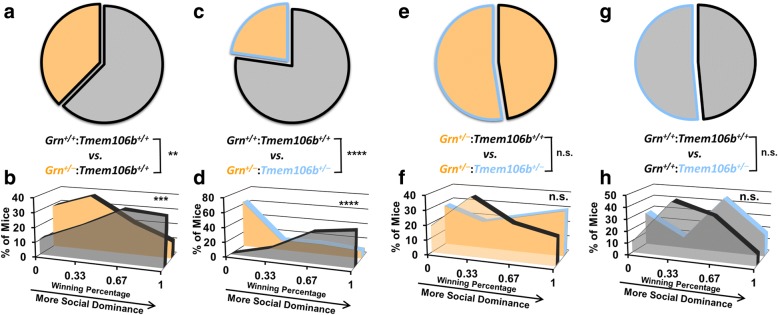Fig. 2.
Tmem106b Reduction Does Not Rescue the Social Dominance Deficits of Grn+/− Mice. When paired against Grn+/+:Tmem+/+ mice, Grn+/−:Tmem+/+ mice exhibited the expected losing phenotype as shown by both wins per genotype (a, Binomial test, p = 0.0053, n = 133 matches) and winning percentage (b, Mann-Whitney test, p = 0.0016, n = 45–46 mice per genotype). Grn+/−:Tmem+/− mice also exhibited a losing phenotype versus Grn+/+:Tmem+/+ mice (c, Binomial test, p < 0.0001, d, Mann-Whitney test, p < 0.0001, n = 30 mice per genotype). Tmem106b reduction did not i change social dominance between either Grn+/− mice(h, Binomial test, p = 0.6879, i, Mann-Whitney test, p = 0.6198, n = 33 mice per genotype) or Grn+/+ mice (f, Binomial test, p > 0.9999 g, Mann-Whitney test, p = 0.6914, n = 11 mice per genotype)

